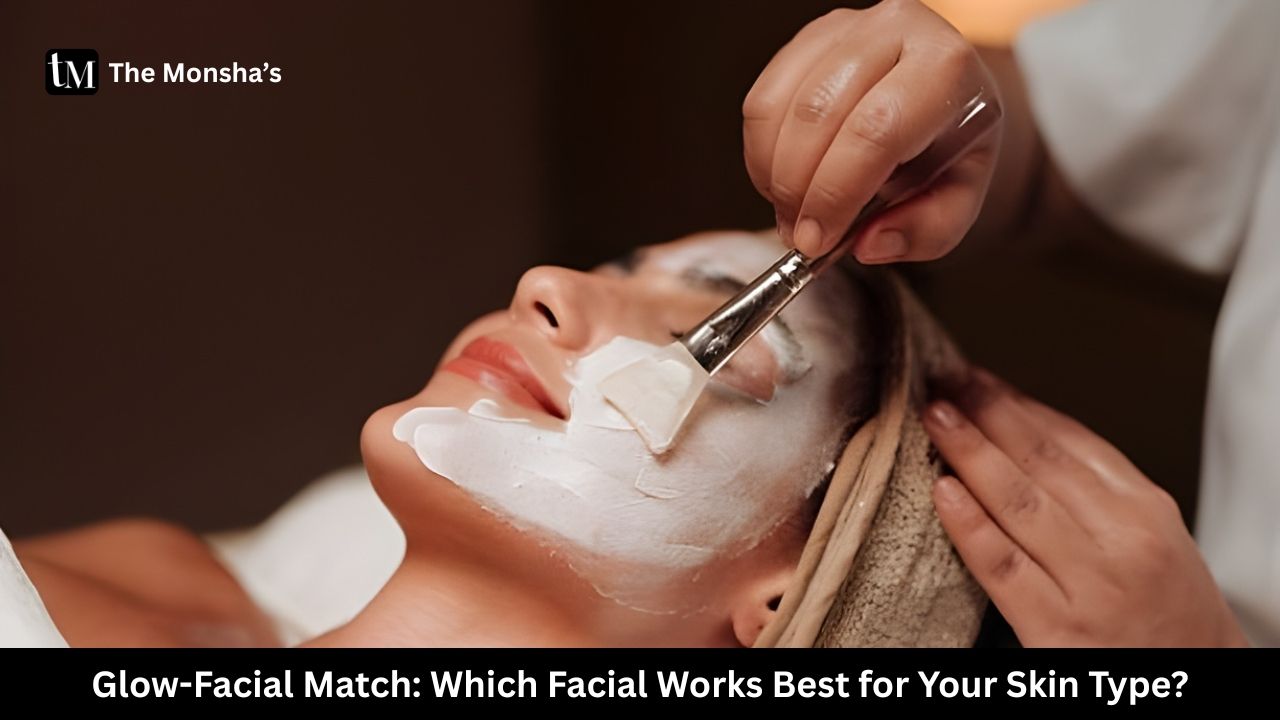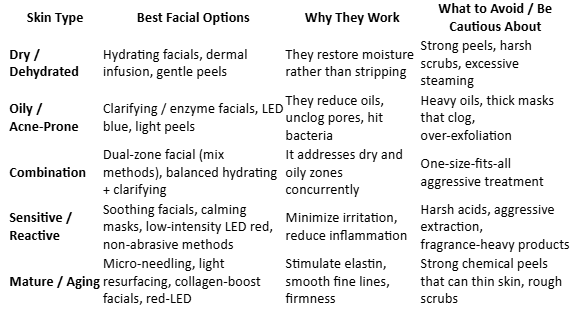
There’s no one “best facial” for everyone—your ideal facial depends heavily on your skin type and concerns. Dry skin needs hydration & gentle methods, oily skin benefits from deep cleansing or enzyme peels, sensitive skin calls for soothing masks, and aging skin may gain from collagen-boosting facials. I’ll walk you through types of facials, how to match them to your skin, what to avoid, and tips I’ve learned by testing more facials than I care to admit.
Let me be blunt: I once booked a strong peel facial because Instagram told me it was “glow in one session.” My skin rebelled—flaking, redness, regret. That day I learned: facials aren’t magic spells, they’re treatments. And like medicine, wrong dosage or wrong type can backfire.
Modern facial overviews list cleansers, exfoliation, extractions, masks, and hydrating steps as core elements. (L'Oreal Paris) But the difference lies in which tools and ingredients and how aggressively they’re used—that’s what must match your skin.
Before you even think of booking or doing a facial, check your skin type. Ask yourself:
Once that’s clear, you can pick facials that benefit your skin—rather than break it.
Let’s map facial options with what they do best (and risks).
Some newer facials, like hydradermabrasion (exfoliation + infusion) combine physical and biochemical benefits. (Wikipedia)
Each type has pros and cons; matching them smartly is key.
Here’s a guide (with a mini table) to help you choose—or challenge your aesthetician.

Tip: Always ask your aesthetician to tailor strength—adjust ingredient concentrations, avoid using full power if your skin is “meh” or healing.
Because we can’t always go to salons. Here’s a simple version:
Home facials should be light. You’re doing a mini pamper, not a full peel.
Facialists also sometimes forget to map your skin or adjust pressure—so speak up!
One time I tried a brightening peel before a big shoot thinking “instant glow.” My face got patchy, peeling, and the glow was replaced by regret. Next time I did a hydration + enzyme blend—that gave natural glow without making me look like peeling paint. Lesson: gentle consistency trumps aggressive one-time attempts.
Picking the right facial is like choosing clothes for weather: match condition to type. If your skin is dry, flash peels will only backfire. If it’s oily, just masks won’t cut it. The best facial is the one tailored for your skin, in that moment. Try gentle ones first, observe, and upgrade carefully.
Look for hydration + balance + clarity—not harshness. Glow is a journey, not a sprint.
Q: Can one facial cure pigmentation / dark spots?
No. Facials can help brighten and smooth, but stubborn pigmentation often needs targeted actives, lasers or peels under supervision.
Q: How often should I get a facial for glowing skin?
Typically every 4–6 weeks, but oily or resilient skin might do 2× in that period; sensitive skin, stick to one.
Q: Are expensive facials always better?
Not necessarily. Value is in customization, ingredient quality, technique—not just price.
Q: Can I mix facial types? (Hydrating + peel)
Yes, but ensure one method doesn’t cancel or irritate the other. Best to separate them by days.
Q: Do facials help acne?
They can reduce oil, clean pores, soothe inflammation—but not when acne is severe or cystic without medical guidance.